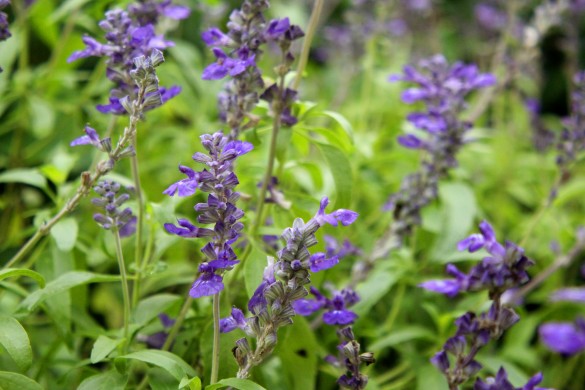Written by Ginny Mirzoyeva, Marketing Intern
Salvia is both and an annual and perennial herb that can grow seasonally or year-round in warm climates. There are many different types of Salvia, such as Salvia Coccinea also known as “Scarlet Sage,” and Victoria Blue known as “mealy sage.” Salvia must be planted during warm weather in the spring time. The plant usually blooms around late summer and can grow from 1-2 feet in height. Because of its vivid appearance, Salvia looks best planted in beds or as a border. Planting, care, and maintenance are generally similar among most salvia plants.
When planting in colder climates, the seeds should first be sown indoors 8-10 weeks before the spring frost. Once the weather warms up and the salvia begins to sprout leaves it may be transplanted outdoors. In warmer, more tropical climates the seeds maybe planted directly outdoors to start with. It is recommended that bedding plants of Salvia Coccinea be purchased for planting because the seeds can take longer to mature before they can be transplanted outdoors. Once the Salvia is planted it must be kept in a warm and partially shaded area. Although it is known to be drought resistant, the plant needs to be watered moderately while it is young. Once it has matured the Salvia will only need watering when the plant begins to wilt. Although it is tolerant of dry soil Salvia should be planted in well-draining soil. Fertilize the plant with compost, or any type of well-balanced plant food to boost nutrition. Adding in mulch in every spring will help to retain moisture in the soil. If the Salvia is planted in a dryer location where rain is inconsistent, watering the plant during the summer is recommended. Although not necessary, it is a good idea to occasionally trim off any dead or dying flower heads to promote growth of new ones.




Are there any plants that occasional mulching won’t help?